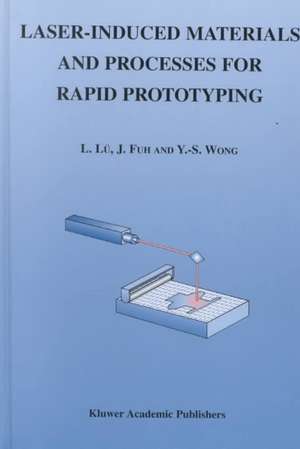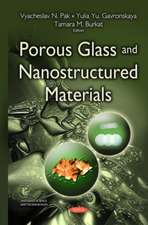Laser-Induced Materials and Processes for Rapid Prototyping
Autor Li Lü, J. Fuh, Yoke-San Wongen Limba Engleză Hardback – 30 iun 2001
| Toate formatele și edițiile | Preț | Express |
|---|---|---|
| Paperback (1) | 640.06 lei 43-57 zile | |
| Springer Us – 14 mar 2014 | 640.06 lei 43-57 zile | |
| Hardback (1) | 646.30 lei 43-57 zile | |
| Springer Us – 30 iun 2001 | 646.30 lei 43-57 zile |
Preț: 646.30 lei
Preț vechi: 760.35 lei
-15% Nou
Puncte Express: 969
Preț estimativ în valută:
123.71€ • 134.42$ • 103.98£
123.71€ • 134.42$ • 103.98£
Carte tipărită la comandă
Livrare economică 21 aprilie-05 mai
Preluare comenzi: 021 569.72.76
Specificații
ISBN-13: 9780792374008
ISBN-10: 0792374002
Pagini: 267
Ilustrații: XVI, 267 p. 128 illus.
Dimensiuni: 155 x 235 x 18 mm
Greutate: 0.58 kg
Ediția:2001
Editura: Springer Us
Colecția Springer
Locul publicării:New York, NY, United States
ISBN-10: 0792374002
Pagini: 267
Ilustrații: XVI, 267 p. 128 illus.
Dimensiuni: 155 x 235 x 18 mm
Greutate: 0.58 kg
Ediția:2001
Editura: Springer Us
Colecția Springer
Locul publicării:New York, NY, United States
Public țintă
ResearchCuprins
1 Introduction.- 1.1 Overview of rapid prototyping and manufacturing.- 1.2 Laser-induced rapid prototyping.- 1.3 RP process characterization and modeling.- 1.4 RP technology trends.- 1.5 References.- 2 Fundamentals of Laser-lithography Processes.- 2.1 Laser-lithography.- 2.2 Laser scanning in LL process.- 2.3 Fundamental relationships.- 2.4 Characteristics of photo-polymerization.- 2.5 Summary.- 2.6 References.- 3 Material Characterization of Laser-lithography Built Parts.- 3.1 Mechanical properties of LL parts.- 3.2 Analyses of degree of curing.- 3.3 Distortion analysis by Moire method.- 3.4 Summary.- 3.5 References.- 4 Improvements of Mechanical Properties by Reinforcements.- 4.1 Introduction.- 4.2 Fiber-reinforced photo-polymer.- 4.3 AEROSIL-mixed photo-polymer.- 4.4 Improvements in LL-process.- 4.5 Summary.- 4.6 References.- 5 Selective Laser Sintering.- 5.1 Principle of laser sintering.- 5.2 Process of selective laser sintering.- 5.3 Liquid phase sintering in SLS.- 5.4 Commercial applications.- 5.5 Metal powders for laser sintering.- 5.6 Densification.- 5.7 Mechanical property.- 5.8 Summary.- 5.9 References.- 6 Metal-Based System via Laser Melting.- 6.1 Selective laser melting process.- 6.2 Metal powders.- 6.3 Composites.- 6.4 Summary.- 6.5 References.- 7 Laser Sintering of Ceramics.- 7.1 Fabrication of ceramic parts using SLS.- 7.2 SLS of ceramic parts.- 7.3 Summary.- 7.4 References.- 8 Characterization, Modeling and Optimization.- 8.1 Introduction.- 8.2 Modeling of RP part fabrication.- 8.3 Optimal orientation.- 8.4 Direct slicing of CAD models.- 8.5 Decision support for process optimization and selection.- 8.6 Summary.- 8.7 References.- 9 Rapid Tooling and Its Applications.- 9.1 Rapid tooling development.- 9.2 Rapid tooling techniques and applications.- 9.3 RT for injection molding - a case study.- 9.4 Application to EDM electrode fabrication.- 9.5 Summary.- 9.6 References.








